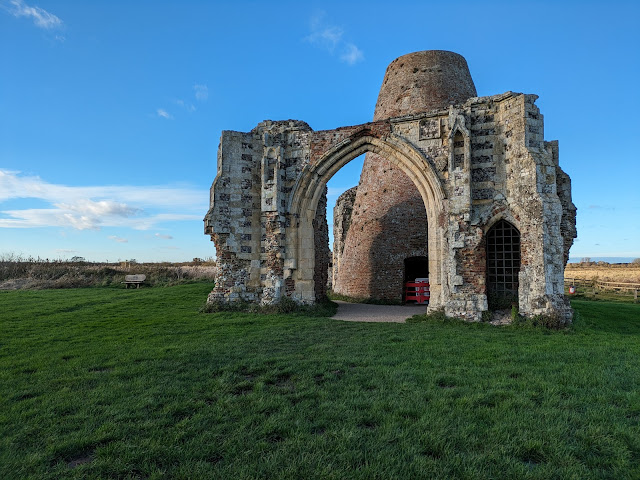St. Edmund's Norfolk Churches
Many are near the coast or rivers; and situated at the top of rising ground, sometimes on mounds, natural or man-made. On the Ely side of the diocecesan border St. Edmund, Downham Market looks out across the fens from the top of the escarpment
Some have speculated that the churches marked the burial places of those who fell beside Edmund in the final series of battles against the Great Heathen Army.
After his death, St. Edmund the King seems to have been revered by the defeated Anglo-Saxons as a tragic hero; and by the Danes as, in some sense their father His death had brought Danes and Anglo Saxons together in Christian Faith and now championed their cause in heaven.
Poppies around a war memorial, within the churchyard of St. Edmund's, unite two acts of remembrance within one semi-circular boundary. Both have days of remembrance that fall in November, 11th for Armistice Day, the 20th for the Feast of St. Edmund.
Like Downham Market, the commanding position of the church is masked by the urban surroundings that have sprung up around the church. Girded by a busy road, its striking position is no longer obvious. It sits in a circular churchyard above, what at the time of its foundation, were inter-tidal marshes around the edge of the Great Estuary.
To the south of Acle, beyond Reedham, is the entrance to the River Yare, winding it's way towards Norwich - North-Wic - the great Anglo-Scandinavian trading centre whose streets still show their Viking roots: - Fisher-gate, Cole - gate. Gate being Gata, the Norse for street. Reedham itself appears in some versions of St. Edmund's story Some say, it was the Vikings that destroyed the church at Reedham
To the north of Acle, is the entrance to the rivers Bure, Thurne and Ant; and to the north-east, the noticeably Anglo-Scandinavian Isle of Flegg, full on names with -by suffixes - Thrigby, Billockby, etc. - by meaning farm.
On the point at the south-west corner of the island, nearest to Acle, where the rivers Bure and Thurne meet, St. Edmund Church, Thurne is also perched above the marshes.
It, is across the river from St. Benet's Abbey. Again, some claim an earlier monastery of the site was destroyed by the Vikings. Re-founded in the 10th Century, it was later endowed and refounded as a Benedictine house, by the first Christian Danish King of England, Cnut.
To the south-east is what was the Island of Lothingland, with St. Edmund's, Fritton and the ruined Priory of St. Olaves. St. Olaves is St. Olaf, a Norwegian king who like Edmund died for his Christian faith. Olaf is depicted in the stained glass of Fritton Church.
Atop a hill, above Fritton Decoy in the valley below, the thatched chancel and sanctuary of this round-towered church may date from the 11th Century. Although age has faded them, it's chief treasure is a 12th Century wall painting that tells the story of martyred king.










Comments